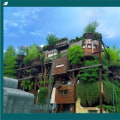Green retrofit is a form of ecological modernization that involves the sustainable renovation of an existing building to make it more efficient, better for the environment and sustainable for the future. It can include replacing light bulbs, lamps, ballasts, and conductors with more efficient models, as well as installing solar panels, geothermal heating, green walls and roofs, smart meters, heat distribution and water-efficient faucets. The Empire State Building in New York is an example of a building that has undergone major ecological remodeling. Green walls and roofs can protect rainwater, purify the air, reduce ambient temperature, regulate indoor building temperature, save money and promote biodiversity in urban areas. The key consideration when introducing ecological improvements is the suitability of the improvements to the building and the strength of the offer.
Major asset owners are starting to consider green modernization to improve their property portfolio as a way to distinguish themselves from their competitors and ensure greater long-term profitability. Energy savings are likely to be generated from green modernization projects due to increased energy efficiency. Labor savings can also be achieved as working in a green company can boost employee morale. Incentives must be made available to developers and contractors if significant progress is to be made in the area of green modernization in the future. Growing demand for green remodels can increase the competitive advantage of their building for tenants who want to improve their carbon footprint and their environmental and social governance (ESG) rating.
Ultimately, green retrofit is an important step towards creating a greener future.



